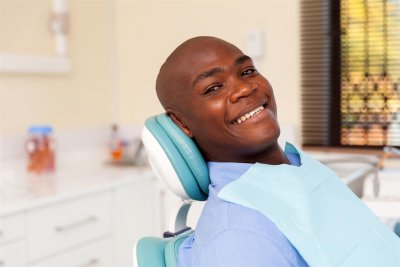The Evolution Of Braces
It’s never too late to take your smile from good to great!
For some, wearing braces for a short period of time can improve one’s confidence for the rest of their life. For others, straightening their teeth is more than just an aesthetic concern. Severe tooth deformities, crookedness, and displacement can cause significant discomfort or difficulty doing normal activities like chewing and speaking.
Whatever the reason they’re employed, braces are undoubtedly one of the most valuable tools that orthodontists provide to help patients develop an ideal, properly aligned smile. In this article, we’ll take a look at the fascinating history of braces and other tooth-straightening efforts over time.
Ancient Orthodontics
While the modern field of orthodontic care may not have officially developed until much later, a variety of practices (that could be considered related to orthodontics) have been discovered – and they date far back to ancient times! In fact, researchers have discovered ancient Egyptian mummies with what appear to be crude braces fashioned from gold bands (around the teeth) and catgut (for wiring).¹
Later, around 400 BC, famed Greek physician Hippocrates wrote a piece on various irregularities of the teeth. Similarly, fellow Greek figurehead, Aristotle, also showed an interest in early orthodontics, pondering ways in which irregular teeth might be corrected.² A few hundred years later in ancient Rome, physician Aulus Cornelius Celsus recommended to parents and other caregivers that they apply gentle pressure to children’s teeth in an attempt to position them properly over time.¹
The Modern Era And Beyond
What we think of today as orthodontics really began to form somewhere between the 17 th and 20 th centuries. By this time, the straightening of teeth had become a regular concern and practice, with a variety of early orthodontists and innovators constantly developing new techniques for correction.
In the 18 th century, a French physician named Pierre Fauchard proposed a unique method of keeping dentures in place. He did this by anchoring the pieces directly to the patient’s molars (effectively “bracing” the teeth). Fauchard also experimented with tooth filing and used metal forceps to reduce the profile of teeth that jutted out above the others (and to space out crowded teeth).
Fauchard also invented a metal band (called a “bandeau”) that was used for expanding the entire arch of teeth all at once.¹ If you’re cringing at the thought of having your teeth filed down or manually spaced out (ouch!) remember that modern orthodontics still use some of the same principles today…but in a more comfortable manner with current anesthetics. ( Lucky us!)
We won’t go too far into the details of the many other Modern Era orthodontic innovators; suffice it to say, new ideas for creating dental symmetry and alignment were always on the rise.
By the mid-to-late 1850s, a dentist named J.N. Farrar had officially recommended the application of force—adjusted at certain intervals over time—to straighten a patient’s teeth (not unlike the early suggestions of Roman physician Aulus Cornelius Celsus we mentioned earlier).
This, in addition to various research into orthodontics at the time, was the turning point for the development of braces as we know them today.³
The term “braces” finally entered the language of orthodontics during the early 1900s, when the practice of applying metal, ivory or wooden “supports” became increasingly common. 4 Also around this time, the first headgear was discovered. It was designed to provide pressure to the teeth while anchored externally to the head and jaw. The devices of the time were nothing like today’s simplistic and minimalist headgear. Back then, the straps often extended around the neck and chin, up the side of the face, and around the top of the head like a harness. Needless to say, many found it embarrassing to wear. 5 ( Who could blame them?!)
Between the 1940s and the 1970s, the metal braces we recognize today began to take shape. The final “train track” style braces of the ’70s used metal wire, elastic bands, and brackets bonded to the teeth with a strong dental adhesive. They created a full system of tension and pressure that gently pulled the teeth into alignment with small adjustments over time. This system is still one of the most commonly used today, though materials, options, and other small details have changed with the times.
The Braces Of Today (And Tomorrow)
Today, the classic “train track” braces continue to remain on the short-list of solutions to crooked or displaced teeth. Plus, with the addition of new knowledge, x-rays, and other modern technologies, orthodontists are able to recognize the start of subtle shifts in a young person’s adult teeth early on. If necessary, an orthodontist can now recommend braces early enough to prevent tooth shifting, for a comfortable, beautiful smile from the start. ( Say cheese!)
In addition to standard braces, current orthodontic practices offer a variety of other options, including unique and stylish metals (e.g., gold), ceramic (e.g., porcelain), and even completely invisible, removable, wire-free options like Invisalign braces.
(Ortho Fact! The common practice of removing problematic wisdom teeth also helps to prevent the shifting and crowding of teeth in adult patients, reducing the need for braces later in life.)
As medical professionals, first and foremost, orthodontists are always looking to improve the health, comfort, and satisfaction of their patients. As they look to the future, pioneers of the field hope to develop novel methods for detecting and preventing tooth and jaw irregularities, as well as more efficient, less intensive methods of straightening.
More Reasons to Smile with Labbe Family Orthodontics
Whether you have a child who’s ready for braces or you’re an adult who is determined to finally correct a crooked smile, Labbe Family Orthodontics has the professional expertise and friendly patient care you’re looking for!
Since 1977, the Labbe Family Orthodontics team has dedicated themselves to changing the smiles (and lives!) of their patients. As a family-centered business, they know the importance of creating a comfortable (and dare we say fun?) orthodontic experience.
So, if you’re ready to improve your smile without feeling like a teenager all over again? ( Oh, the memories!) Labbe Family Orthodontics has the solution. As a trusted Invisalign orthodontist, our practice can have you fitted for custom adult invisible braces to help bring your smile into alignment – without anyone ever knowing!
Whatever issues you or your family members may have with your teeth, seek the compassionate care of the best orthodontist in the Annapolis area. To learn more about our orthodontic services or to make an appointment to discuss your orthodontic concerns, fill out this online contact form or call us today at (410) 267-7300.
Life is better with a smile!
Sources






